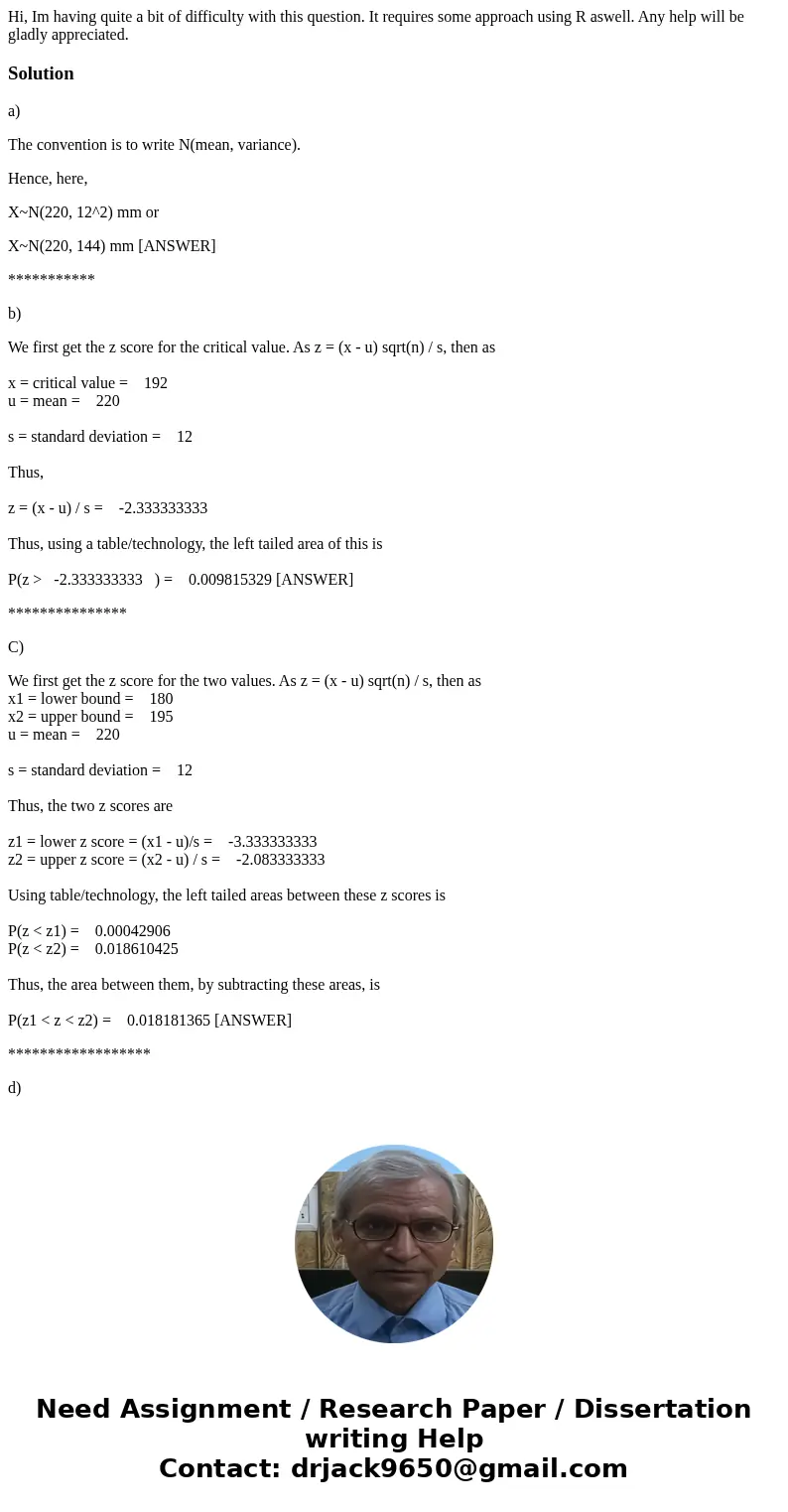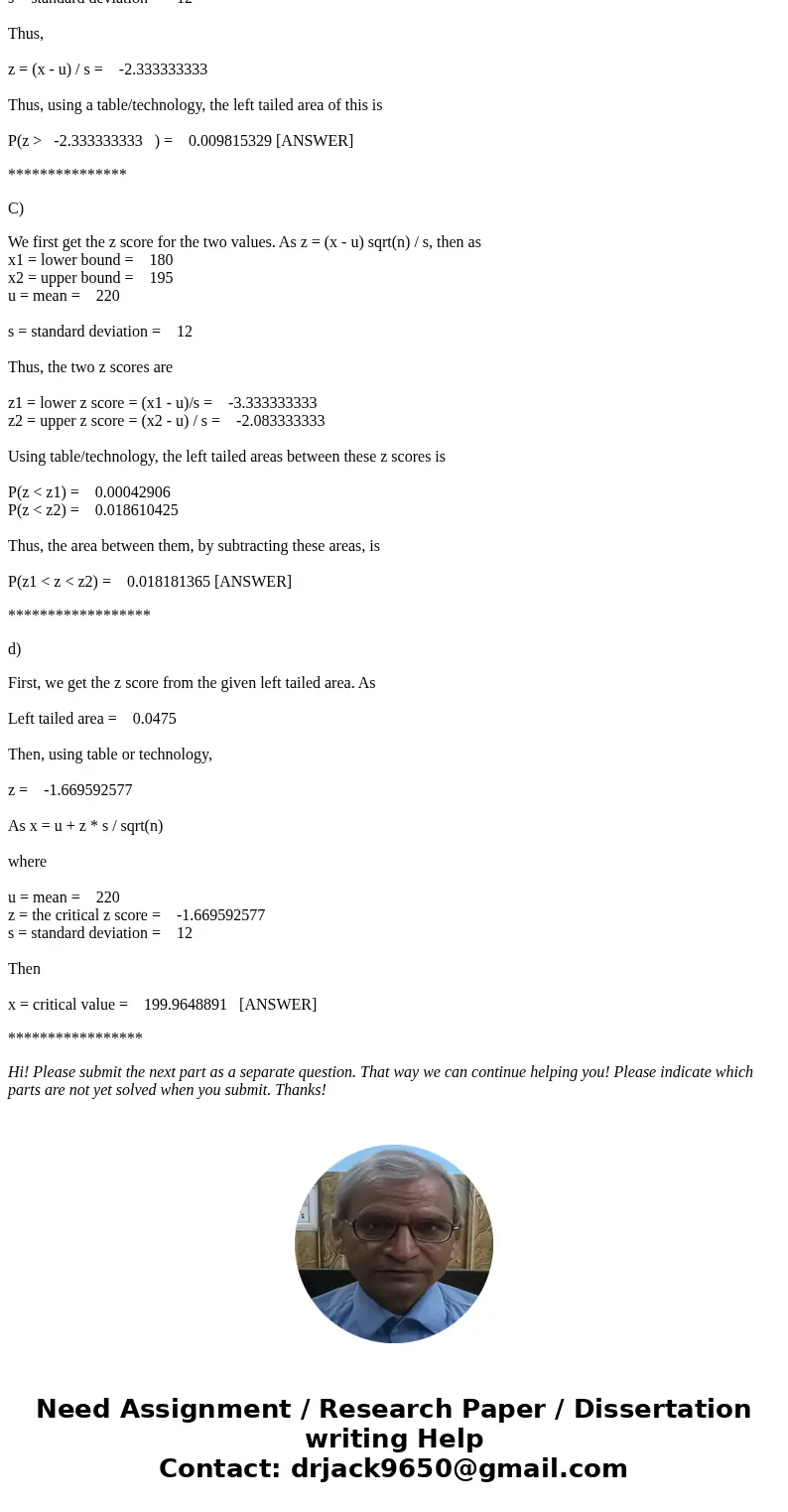Hi Im having quite a bit of difficulty with this question It
Hi, Im having quite a bit of difficulty with this question. It requires some approach using R aswell. Any help will be gladly appreciated.
Solution
a)
The convention is to write N(mean, variance).
Hence, here,
X~N(220, 12^2) mm or
X~N(220, 144) mm [ANSWER]
***********
b)
We first get the z score for the critical value. As z = (x - u) sqrt(n) / s, then as
x = critical value = 192
u = mean = 220
s = standard deviation = 12
Thus,
z = (x - u) / s = -2.333333333
Thus, using a table/technology, the left tailed area of this is
P(z > -2.333333333 ) = 0.009815329 [ANSWER]
***************
C)
We first get the z score for the two values. As z = (x - u) sqrt(n) / s, then as
x1 = lower bound = 180
x2 = upper bound = 195
u = mean = 220
s = standard deviation = 12
Thus, the two z scores are
z1 = lower z score = (x1 - u)/s = -3.333333333
z2 = upper z score = (x2 - u) / s = -2.083333333
Using table/technology, the left tailed areas between these z scores is
P(z < z1) = 0.00042906
P(z < z2) = 0.018610425
Thus, the area between them, by subtracting these areas, is
P(z1 < z < z2) = 0.018181365 [ANSWER]
******************
d)
First, we get the z score from the given left tailed area. As
Left tailed area = 0.0475
Then, using table or technology,
z = -1.669592577
As x = u + z * s / sqrt(n)
where
u = mean = 220
z = the critical z score = -1.669592577
s = standard deviation = 12
Then
x = critical value = 199.9648891 [ANSWER]
*****************
Hi! Please submit the next part as a separate question. That way we can continue helping you! Please indicate which parts are not yet solved when you submit. Thanks!


 Homework Sourse
Homework Sourse